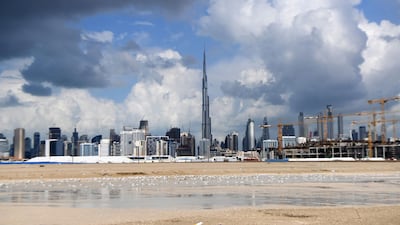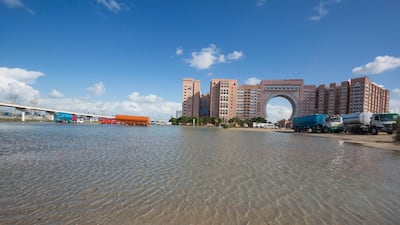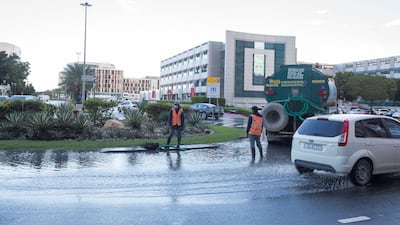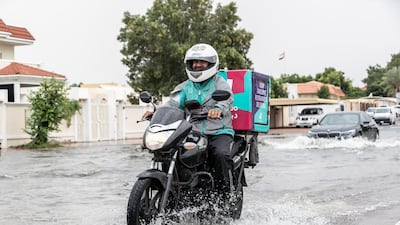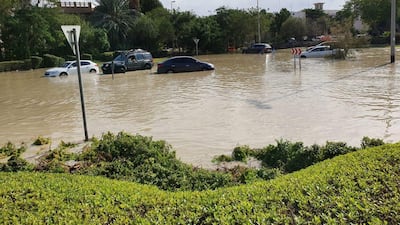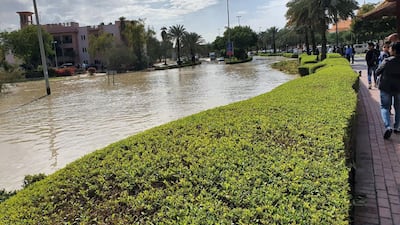A deep water drainage tunnel set to help Dubai combat the threat of flooding for decades to come is due be brought into operation by September, officials said.
Dubai Municipality posted a short video on Instagram, revealing that the city’s new rainwater relief project is now 75 per cent complete.
So far, 10 million man hours have been pumped into the tunnelling and construction process that promises to alleviate some of flooding issues around the emirate’s roads and communities.
The Dh2.5-billion subterranean construction cannot come soon enough.
Storms that swept into the UAE last week caused widespread damage and disruption to scores of communities, as families were forced to abandon homes while roads were brought to a standstill by flooding.
Authorities sprung into action to mount a major clean-up operation after the damaging downpours.
The fierce storms lashing the emirate also caused major travel disruption, with roads closed and many flights delayed or cancelled because of heavy rainfall at Dubai International Airport.
An army of more than 3,000 Dubai Municipality staff worked tirelessly to drain water from affected areas across the emirate.
Dubai’s Roads and Transport Authority had a 600-strong team working round the clock to clear up waterlogged roads before the early-morning commute.
It is hoped the new drainage system will mitigate the effects of flooding – and ensure less resources and manpower is needed in the future.
Once complete, the drainage system will serve an area of 490 square kilometres.
With climate change a key concern in infrastructure planning, it is hoped the tunnel will solve Dubai's flooding issues for the next century.
There are about 60 rainwater pumping stations along Dubai's 1.75 million metre network of pipework and drainage tunnels, with 28,000 connected inspection chambers.
About 72,000 drainage holes allow excess water to flow out to sea or into Dubai Creek via the network's 28 outlets.
Flood relief measures have come under intense pressure in recent weeks after repeated storms battered the UAE, with more rain forecast at the end of this week.
Meanwhile in Abu Dhabi, the fourth international rain enhancement forum got under way to look at new ways to preserve and enhance rainwater when it arrives.
Organised in partnership with the National Centre of Meteorology, the meeting aims to share the latest ideas and technologies to aid water security in arid and semi-arid regions like the UAE.
“The UAE seeks to demonstrate its pioneering efforts in engaging with the international community to address critical water security issues through cloud seeding,” said Dr Abdulla Al Mandous, NCM director.
“Rain enhancement research has emerged as an important scientific discipline due to its vital role in addressing water stress.”
The forum discussed the use of artificial intelligence to predict meteorological events and unmanned aerial vehicles for cloud seeding operations.









